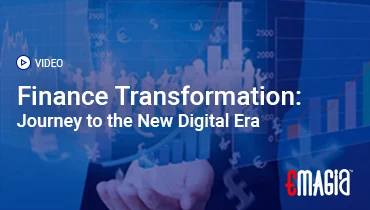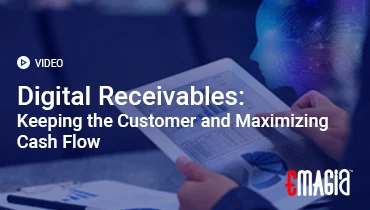In dynamic finance operations today, implementing AI-powered worklist prioritization is becoming a pivotal strategy to elevate performance across credit, collections and cash application workflows. By leveraging data-driven decision-making, automation of manual finance workflows, and predictive analytics in order to cash, organizations can shift from reactive to proactive worklist automation software. This article explores how prioritized credit worklists, payment matching automation, risk-based account prioritization and smart prioritization based on payment behavior and risk factors are enabling enhanced collector productivity, reduction of days sales outstanding (DSO) and optimized financial operations digital transformation.
Why Worklist Prioritization Matters in Finance
Modern finance teams face massive volumes of tasks across credit, collections and cash application that cannot all be handled manually with the same effectiveness. Prioritized collections strategy and worklist automation software help finance leaders allocate resources where they matter most. With smart prioritization based on payment behavior and risk factors, teams gain clarity, speed and accuracy in credit management automation and order to cash process optimization.
The challenge of manual worklists in credit and collections
Manual assignment of accounts and tasks often results in missed opportunities, delayed follow-ups and sub-optimal allocation of highly skilled resources.
Impact on DSO and cash flow acceleration
Inefficient worklist management extends the time to collect, increasing days sales outstanding (DSO) and impairing cash flow acceleration.
The role of data and behaviour in task ranking
Payment history, customer behaviour patterns and external credit signals become powerful inputs when combined with AI and machine learning models.
From intuition to AI-driven credit risk assessment
Instead of relying purely on human judgement, credit managers can adopt AI-driven credit risk assessment to elevate decision-making and task prioritization.
What is AI-powered Worklist Prioritization and How it Works
AI-powered worklist prioritization uses algorithms to analyse attributes such as payment history, credit risk, outstanding balances and collection probabilities to rank tasks in a worklist by urgency and value. The system connects seamlessly with order to cash automation, prioritized credit worklists and collections worklist prioritization models to drive efficiency. With automated invoice processing, payment matching automation and risk-based account prioritization, finance teams can optimise workflows end to end.
Key components: data capture, analytics, prioritization engine
It begins with capturing structured and unstructured data via OCR, RPA in finance and automated reconciliation, feeding predictive models that produce ranked worklists.
Integration with order to cash and accounts receivable automation
The prioritization engine plugs into AR automation platforms, cash application systems and collections worklists to trigger targeted actions.
How matching, behaviour prediction and scoring feed prioritization
Payment likelihood prediction, customer segmentation and overdue account ranking become inputs to build a refined task-ranking model.
Example: payment matching automation boosting prioritization accuracy
When automated payment matching algorithms reduce unapplied cash and exceptions, the prioritization engine gains cleaner data and higher accuracy.
The Business Case for Prioritized Worklists in Order-to-Cash Automation
Deploying prioritized worklists driven by AI provides measurable ROI: improved collector productivity, lower operational cost, faster cash flow, and fewer manual workflow bottlenecks. Order to cash automation combined with collections worklist prioritization and credit management automation accelerates time to value. Smart prioritization based on payment behaviour and risk factors allows organizations to target high-impact tasks and reduce DSO.
Efficiency and productivity gains
Collectors focus on the best-opportunity accounts, reducing time wasted on low-value tasks and increasing recovery rates.
Metrics: collector workload, task completion rate, call to cash time
Key metrics include average tasks per collector, time to resolution and incremental cash collected per hour of effort.
Financial outcomes: DSO reduction and cash flow acceleration
By prioritizing high-risk and high-value accounts, organizations move payments faster, shorten the cash cycle and strengthen working capital.
Case in point: optimized overdue account ranking drives faster collections
When overdue accounts are ranked by risk and payment likelihood rather than simply by age, collection teams can focus where it counts.
Risk mitigation and better credit outcomes
Credit teams using AI in accounts receivable and credit monitoring using AI can detect emerging risks earlier and allocate mitigation efforts proactively.
Credit-to-cash cycle improvement through real-time risk monitoring
Real-time risk monitoring ensures that credit holds, payment plans and collection efforts are aligned with actual customer behaviour.
Core Features of Effective Worklist Prioritization Systems
Next-gen worklist automation software incorporates features including collections worklist prioritization, prioritized credit worklists, payment matching automation, automated dunning and follow-up, and data-driven decision-making in credit and collections. These features power smart prioritization based on payment behaviour and risk factors and enhance collector productivity and workload management.
Prioritized credit worklists and risk-based account prioritization
Credit management automation allows finance teams to create credit worklists ranked by risk, payment behaviour and future exposure.
Auto-classification of new orders and customers needing credit review
Using AI-driven credit risk assessment, systems automatically flag high-risk orders for review and propagate them into prioritized credit worklists.
Collections worklist prioritization and automated dunning
Collections teams receive rank-ordered accounts based on payment likelihood prediction, overdue account ranking and historical behaviour.
Personalised outreach and smart follow-up workflows
Automated dunning and follow-up messages are tailored to each prioritized account, increasing contact rates and resolution speed.
Payment matching automation and automated invoice processing
By automating invoice validation automation and payment matching automation, the system ensures clean data and fewer unapplied items feeding the prioritization engine.
Integration of cash application and worklist systems
AI cash application complements worklist prioritization by ensuring that payments are applied quickly, enabling collectors to focus on actionable accounts.
Integration with Order to Cash and Accounts Receivable Automation
Worklist prioritization does not exist in isolation—its impact is maximised when it is integrated with order to cash process optimization, accounts receivable automation and robotic process automation (RPA) in finance. From credit review and invoice issuance to cash posting and collections, the prioritized worklist ties the end-to-end flow together.
Credit management automation as the upstream driver
When credit decisions are automated early via AI-driven credit risk assessment, fewer problematic accounts enter the collections pipeline and worklist prioritization becomes more effective.
Pre-order credit checks and automated holds
Risk-based account prioritization begins with pre-order checks, blocking high-risk customers or adjusting terms before invoicing.
Cash application and collections downstream
AI cash application and automated reconciliation provide clean AR data; this ensures prioritization engines receive accurate, up-to-date information.
Shortest path from cash receipt to cash posting
With payment matching and automated reconciliation, cash hits the ledger faster and worklists reflect true actionable items.
Feedback loops and continuous improvement
Worklist systems log outcomes and feed back into predictive models, improving accuracy of payment likelihood prediction and overdue account ranking over time.
Collector performance data and model refinement
Data-driven decision-making in credit and collections uses real outcomes to improve future task ranking and workload optimisation.
Technology Enablers Behind Worklist Prioritization
AI-powered worklist prioritization relies on a combination of automation technologies: robotic process automation (RPA) in finance, machine learning for predictive analytics, real-time risk monitoring, and smart prioritization based on payment behaviour and risk factors. These drive order to cash automation, automated reconciliation, and automation of manual finance workflows.
Predictive analytics and payment likelihood prediction
Machine learning models analyse past behaviours, credit scores, macroeconomic data and customer payment patterns to forecast when payment is likely or at risk.
Feature engineering: overdue account ranking and behavioural signals
Signals include days past due, historical payment speed, order volume changes and external credit agency scores to rank accounts intelligently.
Robotic process automation (RPA) and data capture
RPA automates repetitive tasks such as data ingestion, invoice processing, reconciliation and triggers for worklist generation.
Automated invoice processing and payment matching automation
Combining OCR, IDP, and automation software reduces manual touchpoints and ensures consistent data for prioritization engines.
Real-time risk monitoring and continuous priorities updating
Systems continuously monitor risk indicators, customer behaviour and payment events to dynamically update prioritized worklists and collector workload.
Integration with credit monitoring using AI and external data feeds
External credit bureau feeds, open-banking data and behavioural analytics enhance real-time risk monitoring and worklist accuracy.
Challenges and Considerations in Adopting Worklist Prioritization
Despite the clear benefits, deploying AI-powered worklist prioritization involves addressing data quality, change management, integration complexity and governance. Organizations must prepare for automation of manual finance workflows, adjust collector behaviours and ensure the analytics driving prioritized worklists are transparent and explainable.
Data quality, consistency and model training
Incomplete payment history, missing context and inconsistent formats undermine model accuracy and delay value realisation.
Clearing unapplied cash and cleaning AR data
Ensuring robust payment matching automation and invoice validation automation is critical before prioritization models can perform reliably.
Integration with legacy ERP and AR systems
Worklist prioritization engines must connect to order to cash automation platforms, collections systems and ERPs to get full visibility and impact.
Phased vs big-bang implementation strategies
A phased rollout often limits risk, focusing on high-volume segments or high-impact use cases first.
Change management and user adoption
Collectors and credit analysts must trust and use the prioritized worklists; resistance can reduce adoption and value.
Training, governance and continuous feedback loops
Embedding feedback from users into the model and workflow design helps drive higher adoption and better outcomes.
Best Practices for Implementing AI-powered Worklist Prioritization
Successful deployment of worklist prioritization involves defining clear goals, measuring the right metrics (such as reduction in DSO, improvement in collector productivity, clean AR balances), starting with pilot use-cases, selecting the right platform and continuously refining models. Aligning automation of manual finance workflows, data-driven decision-making in credit and collections and enhanced collector productivity is key.
Define KPIs and scope for prioritization initiatives
Baseline DSO, collector productivity, rate of unapplied cash and average days past due inform project scope and success measurements.
Setting realistic targets for reduction in DSO and improvement in auto-priority rate
Targets should be ambitious but achievable given current resources and data maturity.
Selecting the right technology and partner
Platforms should support prioritized worklists, predictive analytics, integrations with AR and O2C systems, and provide explainability of prioritization decisions.
Checklist: worklist automation software capabilities
Capabilities include payment likelihood prediction, overdue account ranking, RPA integration, automated dunning and real-time monitoring.
Pilot-first approach and scaling strategies
Start with high-volume or high-risk segments, measure results and then scale to broader AR and collections operations.
Continuous improvement and feedback loops
Collector feedback, outcome tracking and model retraining should be part of the governance process.
Case Studies & Real-World Impacts of Worklist Prioritization
Leading organisations have achieved dramatic improvements by adopting prioritized credit worklists, collections worklist prioritization and payment matching automation. From reducing manual workload, increasing collections outreach, to cutting DSO by multiple days, the real-world outcomes demonstrate the value of worklist automation software and AI-driven task ranking for collections.
High-volume B2B collections transformation
A large industrial firm implemented AI in order to cash automation including worklist prioritization and saw significant uplift in collector productivity and cash recovered.
Key outcomes: % auto-priority, DSO reduction, cost per collector
Outcomes included >90% of tasks being auto-prioritized, DSO reduced by 4-7 days and cost per collector reduced by 20-30%.
Global enterprise credit and collections overhaul
A multinational corporation rolled out prioritized worklists across regions, integrated with automated invoice processing and cash application to accelerate global cash flow.
Lessons from global deployment: scalability, localization and change management
Standardisation, local payment behaviour modelling and strong governance proved critical for success.
Mid-market quick-win scenario
A mid-sized company adopted RPA and prioritized worklist automation software for collections and credit management and realised tangible results within months.
Fast ROI: focusing on highest-risk segments first
By focusing on top 10% of overdue accounts, the team cut DSO and improved working capital rapidly.
Future Trends in Worklist Prioritization and Finance Automation
The future of worklist prioritization lies in self-steering systems, embedded AI in finance workflows, hyper-automation combining RPA + AI, smart prioritization based on payment behaviour and external data and full end-to-end order to cash automation. As technologies like real-time risk monitoring, payment likelihood prediction and AI in accounts receivable evolve, the credit and collections workflows will become increasingly autonomous and strategic.
Self-steering worklist systems and adaptive prioritisation
Future platforms will automatically adjust weights, ranking criteria and workflows based on live performance and outcome data.
AI-enhanced billing accuracy and autonomous decision-making
Systems will extend into billing, invoice validation automation and decisioning without human input for simple cases.
Embedded analytics and real-time prioritization updates
Continuous streams of payment, customer interaction and external credit data will feed models that update priorities in real-time for collectors.
Impact on cash flow and competitive advantage
Faster response to customer behaviour and near-instant task ranking will deliver superior working capital performance and drive competitive edge.
How Emagia Supports Intelligent Worklist Prioritization & Finance Automation
Emagia provides a comprehensive platform that consolidates prioritised credit worklists, collections worklist prioritization, payment matching automation, AI cash application and robotic process automation in finance into one integrated solution. Their system applies machine learning to payment history, customer behaviour, external credit data and real-time transactions to generate ranked worklists that maximise collector productivity and cash flow. With intelligent document processing, automated invoice processing and smart prioritization based on payment behaviour and risk factors, Emagia enables organizations to implement a truly data-driven decision-making approach in credit and collections and accelerate digital transformation in financial operations.
Emagia’s key differentiators
These include end-to-end order to cash process optimization, real-time risk monitoring, seamless integration with ERPs, and worklist automation software built for global operations.
Scalability, configurability and fast time to value
From midsize to enterprise scale, the solution supports multiple geographies, languages and payment behaviours, offering quick deployment and measurable results in reduction of DSO and improved working capital.
Frequently Asked Questions (FAQs)
What is worklist prioritization in collections and why is it critical?
Worklist prioritization refers to ranking and assigning tasks based on value, urgency and likelihood of payment instead of processing accounts in simple aging order.
How does AI-powered worklist prioritization differ from traditional methods?
Traditional methods often rely on age buckets or manual judgement, whereas AI-powered worklist prioritization uses predictive analytics, payment behaviour and risk scoring to rank tasks dynamically.
What role does payment matching automation play in worklist prioritization?
Payment matching automation cleans and applies payments faster, reducing unapplied cash and providing accurate data inputs for prioritization engines.
How does prioritized credit worklists improve cash flow?
By focusing credit review and blocking decisions on high-risk or high-value customers early, organizations reduce bad debt, accelerate collections and optimise working capital.
Which KPIs should be tracked in a worklist prioritization initiative?
Key KPIs include auto-priority rate, reduction in DSO, collector productivity, unapplied cash levels, number of tasks completed per hour and cash flow acceleration.
Conclusion
AI-powered worklist prioritization stands at the intersection of credit management automation, order to cash process optimization and collections worklist prioritization. By unlocking prioritized credit worklists, payment likelihood prediction, automated dunning and follow-up, and smart prioritization based on payment behaviour and risk factors, finance teams can move from reactive backlog management to proactive cash-flow leadership. Investing in the right worklist automation software, aligning people, process and technology and continuously refining models empowers organizations to reduce DSO, increase collector productivity and achieve sustainable financial operations digital transformation.



